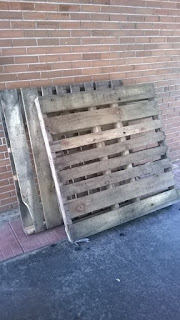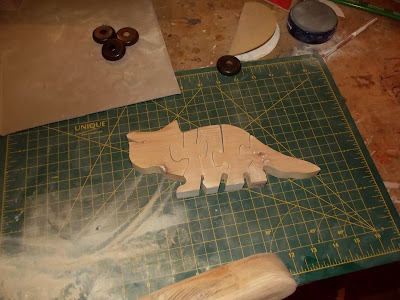Back in March I showed a router jig that enabled me to flatten both sides of one of these rounds and to get the sides very close to parallel. If parallel isn't important I figured out another way to get a smooth finish with a bit less effort.
bark off
First I put the round on a non-slip mat on my bench top. Then I begin to rough the face down with an electric hand plane that I picked up at a wood show a few years ago.
My planner has a very short bed and throws chips everywhere but it was cheap and I don't mind using it brutally. By the time this set of ash rounds is done, I expect the planer to be done too. Since rounds were cut from the tree trunk with a chain saw and even though my Brother in Law was careful there is still lots of wood to be removed before the slices are even flattish.

The next stage in the process is either a 4 1/2 inch angle grinder or my belt sander with a very aggressive disk or belt. I have a 40 grit disk and a 60 grit belt. Both of these tools are older and throw a serious amount of dust. The next time I do the grinding stage on a round will be done outside.
The next stage in the process is either a 4 1/2 inch angle grinder or my belt sander with a very aggressive disk or belt. I have a 40 grit disk and a 60 grit belt. Both of these tools are older and throw a serious amount of dust. The next time I do the grinding stage on a round will be done outside.


After the machines have removed the bulk of the rough stuff I have found that scrapers work better that sand paper to arrive at the final finish. I scrape from the centre outward to get the best results.

Once the face is scraped I apply salad bowl polish and work it in with my polissoir. These rounds are for serving cheese so I wanted a food safe finish.
 |
| contact me through the comments section of the blog |
I have about ten more pieces of ash with which to play. It will be sad when the emerald ash borer has killed off all our ash trees.























